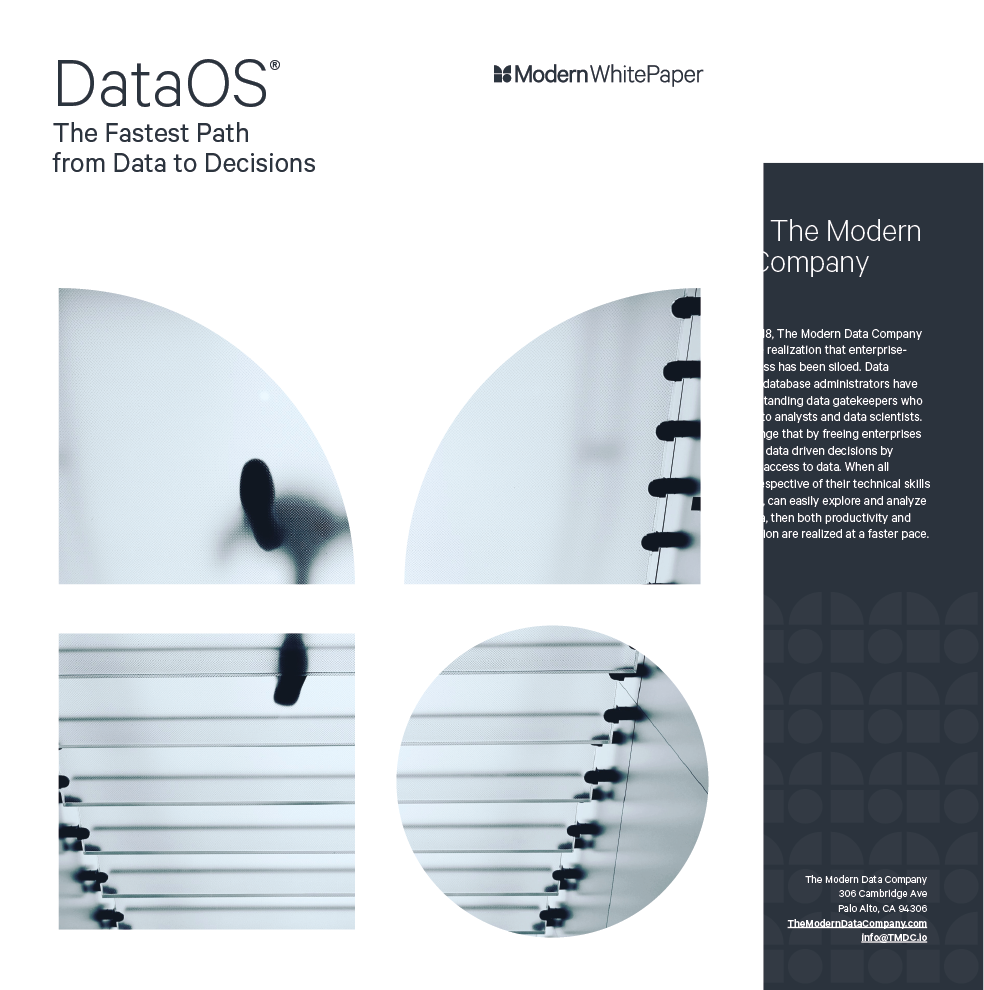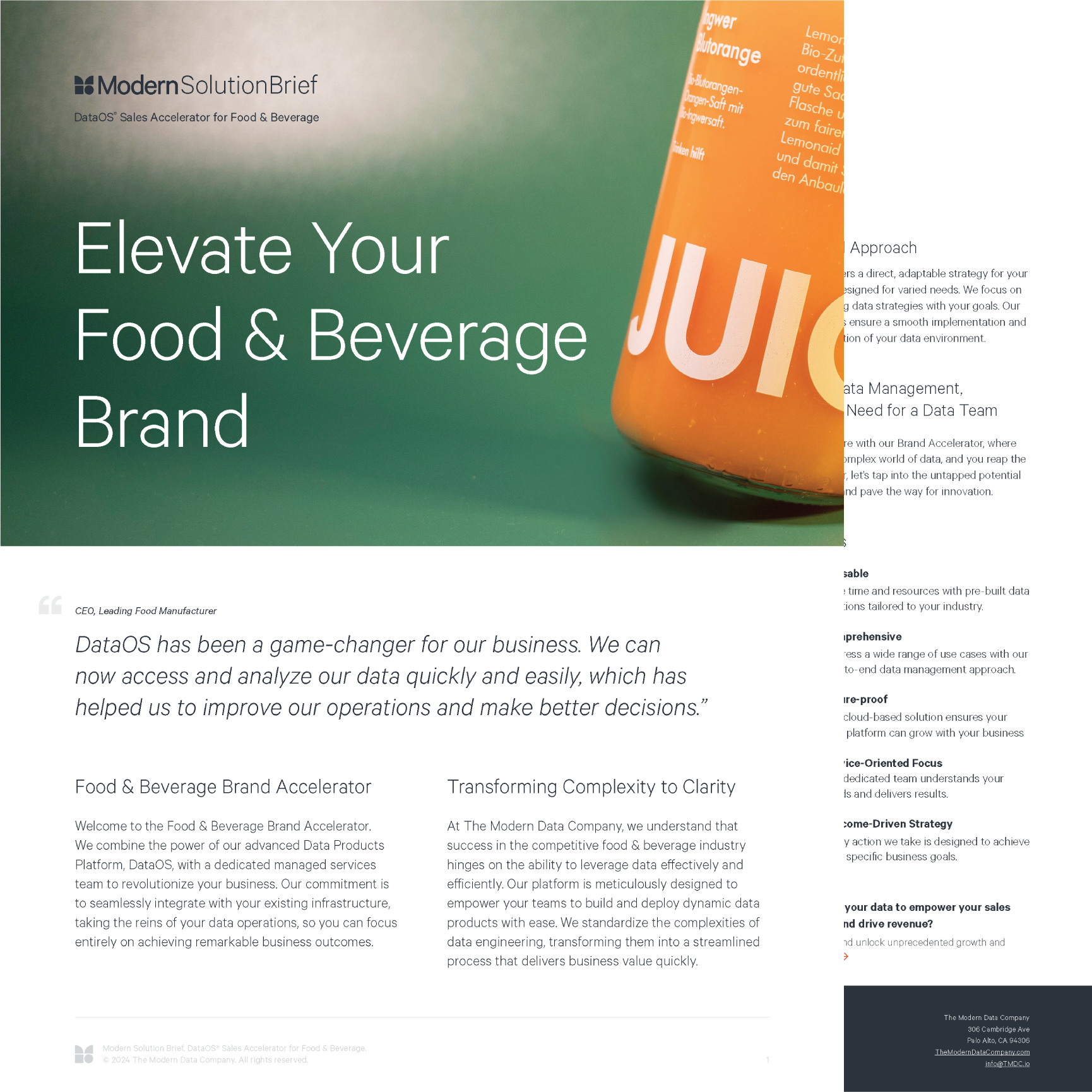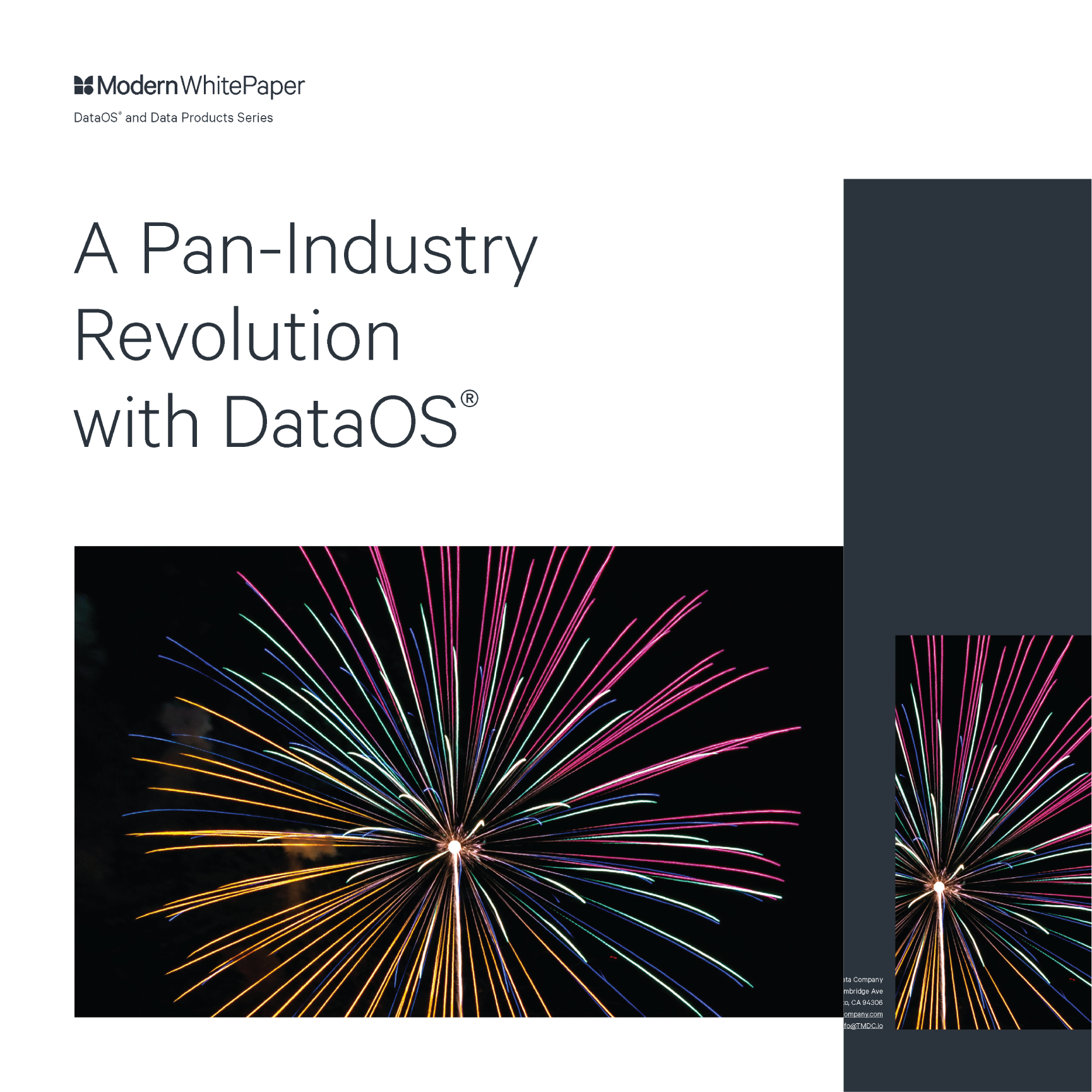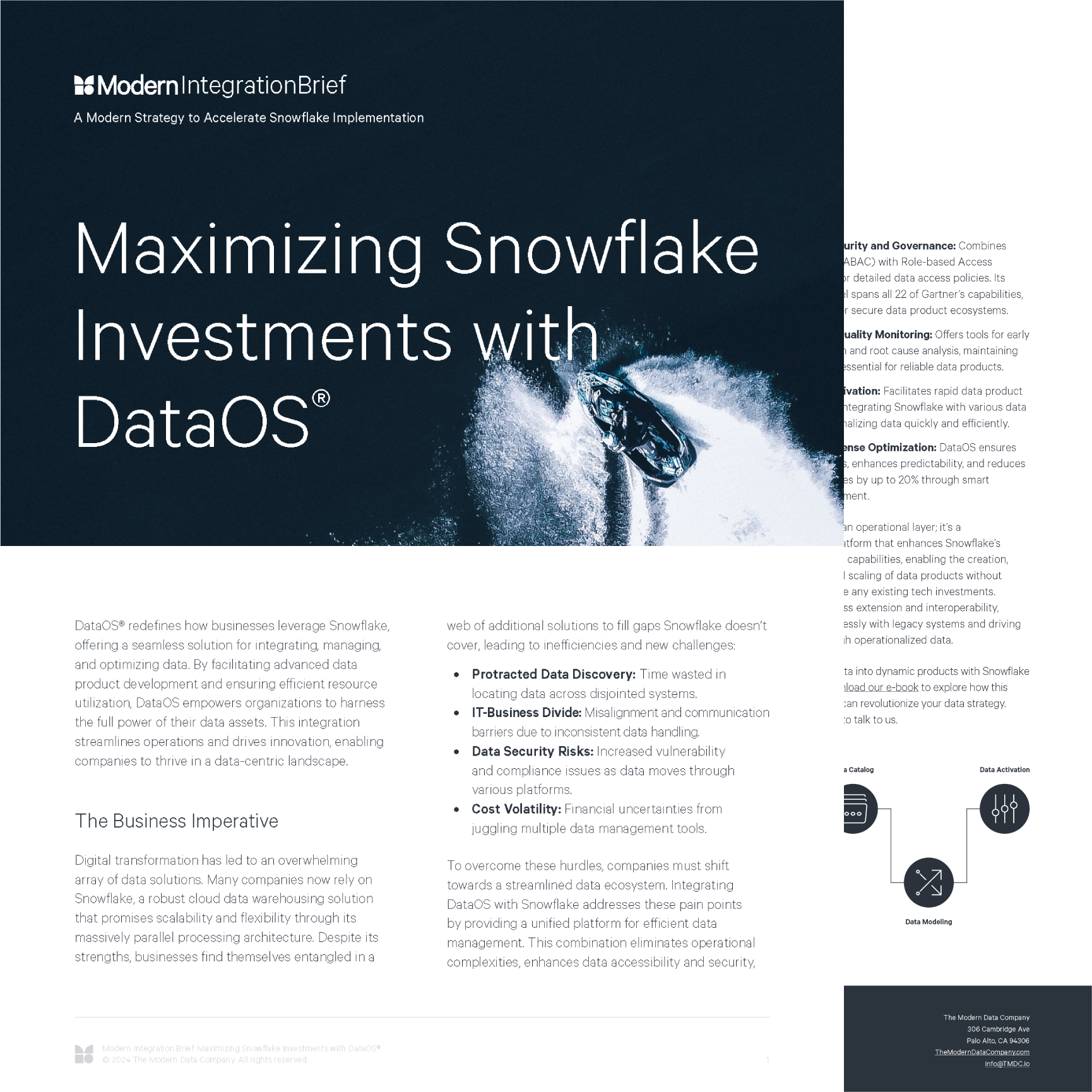
How to drive trusted decisions without changing your current data infrastructure.
Learn more about DataOS® in our white paper.
Adopting a data-driven culture is priority number one for many organizations. However, it can be challenging to know whether this shift has been accomplished. Becoming truly data-driven isn’t just about the technology. A company must create a data-driven culture to go along with any new solutions. When organizations take the time to nurture a data-driven company culture from boardroom to mailroom, they can unlock the true potential of data.
These are the five biggest signs that a shift to a data-driven culture is under way.
The old way: C-suite/IT kept data locked away creating data silos
Data can be risky. Governance in the era of big data is a challenge. However, all departments should become shareholders of the data they need to make decisions. Waiting for weeks for reports to be built stymies marketing teams and puts decision making behind.
Companies building a data-driven culture understand that each department needs usable dashboards with data at their fingertips in real-time. Team members interact with data on an ongoing basis for real-time insight and become collaborative in decision-making thanks to dashboards with clear visualization.
Making the shift:
The old way: Importing data regardless of source, form, or function meant that 80% of processing was spent just cleaning.
Poor quality data impedes workflow and creates operational inefficiencies. A process for ensuring data quality is a significant step towards becoming data-driven. Companies can break down data silos, ensuring everyone has access to the right data, and build in workflows to ingest the correct data for the query.
Making the shift:
The old way: Decision-making centered around past events, past data, and past trends. Companies unable to be ahead of the curve because all decisions were past-focused.
Now that companies have data — collected from legacy sources and new solutions — they want to use it to produce the valuable insights promised to them. Truly data-driven companies have access to real-time insights thanks to data-in-motion. Whereas past data models relied on what happened in past years to predict the next quarter or two, companies and departments can now make decisions based on real-time customer behavior and market decisions. This does two things:
Making the shift:
The old way: Endless meetings about data. Talking about data. Discussing what to do with data. Top-down strategies built from the boardroom and communicated through a meeting in which data is on paper, and no one sees insights.
A data-driven organization doesn’t need endless meetings to discuss data. Through accessible dashboards, departments spend time using data instead of just talking about it. Even better, that data proliferates throughout the organization and not just the boardroom.
This doesn’t mean all talk about data is off the table. The issue with meetings is that they’re often past-focused (see the third shift), steering decisions back towards value insights that might be several weeks or even months old. Instead of focusing on meetings about data, a data-driven organization spends time utilizing data.
Making the shift:
The old way: More tools seems better, but companies end up investing in tools that no one uses. With each technology overhaul, there’s downtime and retraining involved. The end result? A wealth of available tools that no one checks.
One of the biggest lessons learned in the past few years is that more tools isn’t the answer to digital transformation. Part of digital transformation is a reckoning of technology; organizations with data-driven culture take a frequent stock of tools to make sure employees are using them and receiving value.
Making the shift:
A data-driven company culture embraces the real-time flow of data. It breaks down silos and encourages everyone in the company to access the data they need. If this change isn’t happening quite yet, it only takes a few shifts to nudge the company in the right direction.
Modern’s DataOS® platform provides a framework that unlocks data, ensures quality, and manages governance down to the granular level. DataOS breaks data silos and powers organizations with secure, governed, and high-quality data ‒ all in real-time. Schedule a demo to see it in action.
Be the first to know about the latest insights from Modern.

The elegance of Data Products is undeniable, but many leaders question the efficacy of their data strategies: Why does the return on data investments often disappoint? Why is proving data's value becoming harder? Why do data models become more cumbersome than...

Data is vital to business but the process of getting from data to insights is often murky. Many on the business side may not even care how it happens but understanding this process matters. It matters a lot. With this in mind, let's explore how to demystify the...

We don't want to restrict the scope of this article to only data leaders and influential executives. As startup folks, we are confident in how individual contributors or ICs, such as Data Engineers, DevOps experts, or even the surprising intern, could influence the...

It's a tale as old as time. A startup manages to disrupt an entire industry only to find itself at a critical juncture a few years down the road. Data, the lifeblood of its operations, was becoming increasingly complex and unwieldy. With each new product launch and...

For today's Chief Data Officers (CDOs) and data teams, the struggle is real. We're drowning in data yet thirsting for actionable insights. Traditional data architectures, with their centralized data lakes and batch-oriented processing, are like bloated, slow-moving...

DataOS Sales Accelerator for Food & Beverage The dynamic food & beverage industry demands a data-driven approach to success. The Modern Data Company's DataOS® Sales Accelerator acts as your all-in-one data concierge. Our pre-built solutions, designed...

Unleashing the Power of AI with Data Products Traditional project-centric data management stifles AI innovation with siloed data, slow workflows, and limited reusability. Enter the era of data products: self-contained modules of data, logic, and infrastructure that...

A Pan-Industry Revolution with DataOS® Unleash the revolution with Data Products powered by DataOS®. These self-contained data units, bursting with actionable insights, offer unmatched flexibility, agility, and compliance across all sectors. From personalized customer...

Cross-Sell Accelerator for Credit Cards In the hyper-competitive BFSI landscape, maximize credit card cross-sell potential with data-driven precision. Cross-Sell Accelerator empowers you to forge deeper customer connections with personalized offers, optimize...

Maximizing Snowflake Investments with DataOSUnleash the true potential of your Snowflake investment with DataOS®, the data product platform that seamlessly integrates, empowers, and elevates your existing infrastructure. Build robust data products faster, eliminate...